-
 Bitcoin
Bitcoin $108,942.7945
0.84% -
 Ethereum
Ethereum $2,550.7975
1.99% -
 Tether USDt
Tether USDt $1.0003
-0.01% -
 XRP
XRP $2.2677
2.56% -
 BNB
BNB $663.1560
1.60% -
 Solana
Solana $152.7411
4.14% -
 USDC
USDC $1.0000
0.01% -
 TRON
TRON $0.2850
0.53% -
 Dogecoin
Dogecoin $0.1708
4.85% -
 Cardano
Cardano $0.5859
2.07% -
 Hyperliquid
Hyperliquid $39.5171
1.44% -
 Sui
Sui $2.9185
1.44% -
 Bitcoin Cash
Bitcoin Cash $496.1863
2.78% -
 Chainlink
Chainlink $13.4483
2.80% -
 UNUS SED LEO
UNUS SED LEO $9.0293
0.06% -
 Avalanche
Avalanche $18.2223
2.50% -
 Stellar
Stellar $0.2448
3.59% -
 Toncoin
Toncoin $2.9214
6.33% -
 Shiba Inu
Shiba Inu $0.0...01181
3.34% -
 Hedera
Hedera $0.1581
2.45% -
 Litecoin
Litecoin $87.8205
1.67% -
 Monero
Monero $318.3990
1.63% -
 Polkadot
Polkadot $3.3992
2.04% -
 Dai
Dai $0.9999
0.00% -
 Ethena USDe
Ethena USDe $1.0001
-0.02% -
 Bitget Token
Bitget Token $4.4137
0.72% -
 Uniswap
Uniswap $7.4148
7.24% -
 Pepe
Pepe $0.0...01002
3.94% -
 Aave
Aave $276.7555
3.24% -
 Pi
Pi $0.4612
0.27%
How to operate when APT's 4-hour K-line forms an engulfing pattern?
When trading APT, identify engulfing patterns on 4-hour K-lines, confirm with volume and indicators, set strategic entry/exit points, and manage risks effectively.
Apr 27, 2025 at 03:01 am
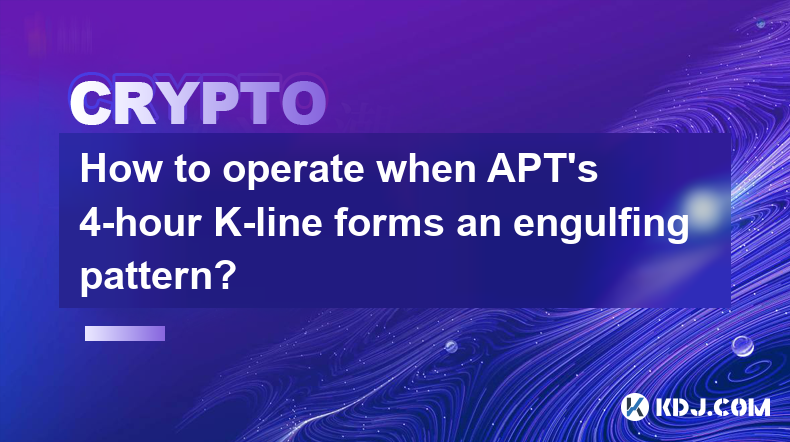
When dealing with the cryptocurrency market, specifically with the APT (Aptos) token, understanding and reacting to chart patterns like the engulfing pattern on a 4-hour K-line can be crucial for traders. An engulfing pattern is a significant indicator of potential trend reversals, making it essential for traders to know how to operate when such a pattern appears.
Identifying the Engulfing Pattern on APT's 4-Hour K-Line
The first step in operating when APT's 4-hour K-line forms an engulfing pattern is to correctly identify it. An engulfing pattern consists of two candlesticks, where the second candlestick completely engulfs the body of the first one. There are two types of engulfing patterns: bullish and bearish.
Bullish Engulfing Pattern: This occurs when a small bearish candlestick is followed by a larger bullish candlestick that completely engulfs the previous one. It suggests that the bulls have taken control and a potential upward trend reversal might be imminent.
Bearish Engulfing Pattern: Conversely, this pattern forms when a small bullish candlestick is followed by a larger bearish candlestick that completely engulfs the previous one. It indicates that the bears have gained control, suggesting a potential downward trend reversal.
To identify these patterns on APT's 4-hour K-line, traders should:
- Use a reliable charting platform that supports cryptocurrency trading.
- Set the chart to a 4-hour timeframe.
- Look for the two consecutive candlesticks that meet the engulfing pattern criteria.
Confirming the Engulfing Pattern
After identifying an engulfing pattern, it's crucial to confirm its validity before making any trading decisions. Confirmation can be achieved through several methods:
Volume Analysis: An increase in trading volume during the formation of the engulfing pattern can strengthen the signal. Higher volume indicates stronger market participation and can validate the pattern's reliability.
Support and Resistance Levels: Check if the engulfing pattern forms near key support or resistance levels. A bullish engulfing pattern near a support level or a bearish engulfing pattern near a resistance level can enhance the pattern's significance.
Other Technical Indicators: Utilize other technical indicators like the Relative Strength Index (RSI), Moving Averages, or the Moving Average Convergence Divergence (MACD) to confirm the potential trend reversal signaled by the engulfing pattern.
Setting Up Trading Positions
Once the engulfing pattern is confirmed, traders can proceed to set up their trading positions. The approach depends on whether the pattern is bullish or bearish.
For a Bullish Engulfing Pattern:
- Entry Point: Enter a long position at the opening of the next candlestick after the bullish engulfing pattern.
- Stop-Loss: Set the stop-loss below the low of the engulfing pattern to manage risk.
- Take-Profit: Determine take-profit levels based on previous resistance levels or a risk-reward ratio that aligns with your trading strategy.
For a Bearish Engulfing Pattern:
- Entry Point: Enter a short position at the opening of the next candlestick after the bearish engulfing pattern.
- Stop-Loss: Set the stop-loss above the high of the engulfing pattern to manage risk.
- Take-Profit: Determine take-profit levels based on previous support levels or a risk-reward ratio that aligns with your trading strategy.
Managing the Trade
Effective trade management is crucial once positions are established. Here are some steps to manage the trade:
- Monitor the Trade: Keep an eye on the market movements and the performance of APT against your entry point.
- Adjust Stop-Loss: As the trade moves in your favor, consider adjusting the stop-loss to lock in profits and reduce potential losses.
- Trailing Stop: Implement a trailing stop to maximize gains while protecting against sudden reversals.
- Exit Strategy: Have a clear exit strategy based on your trading plan, whether it's hitting a take-profit level or cutting losses if the market moves against you.
Risk Management
Risk management is paramount when trading based on chart patterns like the engulfing pattern. Here are some risk management strategies to consider:
- Position Sizing: Only risk a small percentage of your trading capital on any single trade to protect your overall portfolio.
- Diversification: Don't put all your eggs in one basket. Consider diversifying your trades across different cryptocurrencies and strategies.
- Risk-Reward Ratio: Always aim for a favorable risk-reward ratio, such as 1:2 or 1:3, to ensure that potential profits outweigh potential losses.
Psychological Aspects of Trading
Trading based on chart patterns can be emotionally challenging. Here are some tips to manage the psychological aspects of trading:
- Stick to Your Plan: Adhere to your trading plan and don't let emotions dictate your decisions.
- Avoid Overtrading: Don't chase every engulfing pattern you see. Be selective and only trade high-probability setups.
- Take Breaks: Trading can be stressful, so take regular breaks to maintain a clear mind and avoid burnout.
Frequently Asked Questions
Q: Can the engulfing pattern be used on other timeframes besides the 4-hour K-line?
A: Yes, the engulfing pattern can be used on various timeframes, including daily, hourly, and even minute charts. However, the significance and reliability of the pattern may vary depending on the timeframe. Shorter timeframes may produce more false signals, while longer timeframes tend to offer more reliable signals.
Q: Is it necessary to use additional technical indicators to confirm the engulfing pattern?
A: While it's not strictly necessary, using additional technical indicators can enhance the reliability of the engulfing pattern. Indicators like RSI, MACD, and volume can provide additional confirmation and help traders make more informed decisions.
Q: How can traders differentiate between a true engulfing pattern and a false signal?
A: Differentiating between true and false signals requires experience and the use of additional confirmation tools. Look for increased volume, proximity to key support or resistance levels, and corroboration from other technical indicators to increase the likelihood of a true signal.
Q: Should traders rely solely on the engulfing pattern for making trading decisions?
A: No, traders should not rely solely on the engulfing pattern. It's important to use it in conjunction with other technical analysis tools and fundamental analysis to make well-rounded trading decisions. Combining multiple indicators and strategies can help improve the accuracy of your trades.
Disclaimer:info@kdj.com
The information provided is not trading advice. kdj.com does not assume any responsibility for any investments made based on the information provided in this article. Cryptocurrencies are highly volatile and it is highly recommended that you invest with caution after thorough research!
If you believe that the content used on this website infringes your copyright, please contact us immediately (info@kdj.com) and we will delete it promptly.
- Litecoin Breakout Watch: What Traders Need to Know Now
- 2025-07-06 16:50:13
- Bitcoin, Solana, Ethereum: Decoding the Latest Buzz on the Blockchain
- 2025-07-06 16:50:13
- Widnes Resident's 50p Could Be Your Ticket to Easy Street: Rare Coin Mania!
- 2025-07-06 16:55:13
- Bitcoin, Solaris Presale, and Token Rewards: What's the Buzz?
- 2025-07-06 16:55:13
- Ethereum Under Pressure: Price Drop Amid Global Uncertainties
- 2025-07-06 17:00:13
- XRP, SEC Case, and Prosperity: A New Era for XRP Holders?
- 2025-07-06 17:10:13
Related knowledge
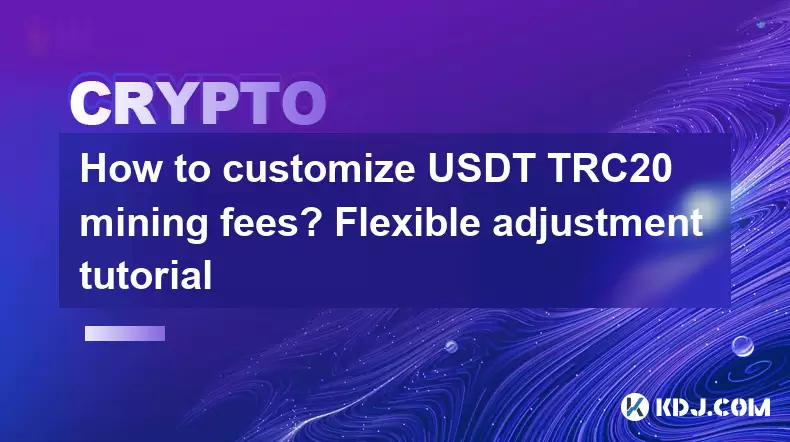
How to customize USDT TRC20 mining fees? Flexible adjustment tutorial
Jun 13,2025 at 01:42am
Understanding USDT TRC20 Mining FeesMining fees on the TRON (TRC20) network are essential for processing transactions. Unlike Bitcoin or Ethereum, where miners directly validate transactions, TRON uses a delegated proof-of-stake (DPoS) mechanism. However, users still need to pay bandwidth and energy fees, which are collectively referred to as 'mining fe...
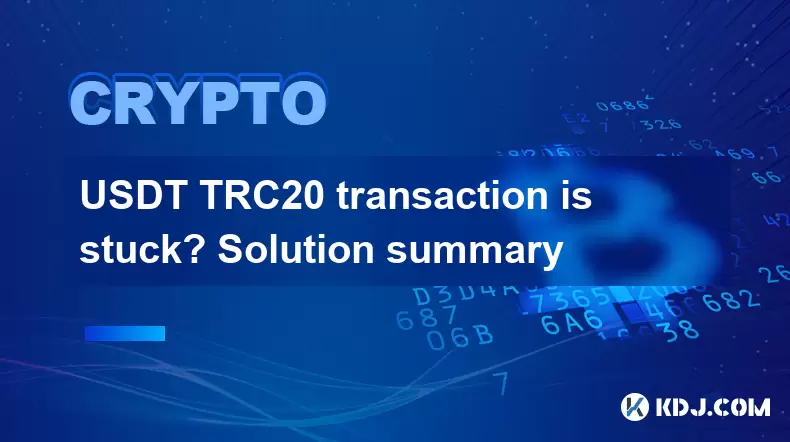
USDT TRC20 transaction is stuck? Solution summary
Jun 14,2025 at 11:15pm
Understanding USDT TRC20 TransactionsWhen users mention that a USDT TRC20 transaction is stuck, they typically refer to a situation where the transfer of Tether (USDT) on the TRON blockchain has not been confirmed for an extended period. This issue may arise due to various reasons such as network congestion, insufficient transaction fees, or wallet-rela...
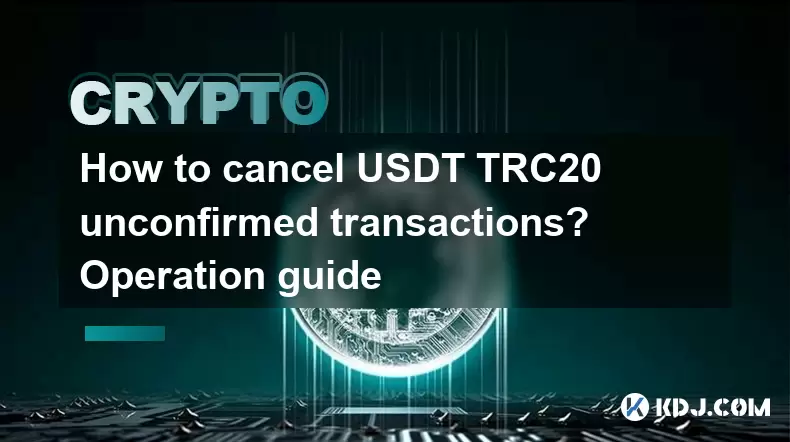
How to cancel USDT TRC20 unconfirmed transactions? Operation guide
Jun 13,2025 at 11:01pm
Understanding USDT TRC20 Unconfirmed TransactionsWhen dealing with USDT TRC20 transactions, it’s crucial to understand what an unconfirmed transaction means. An unconfirmed transaction is one that has been broadcasted to the blockchain network but hasn’t yet been included in a block. This typically occurs due to low transaction fees or network congestio...
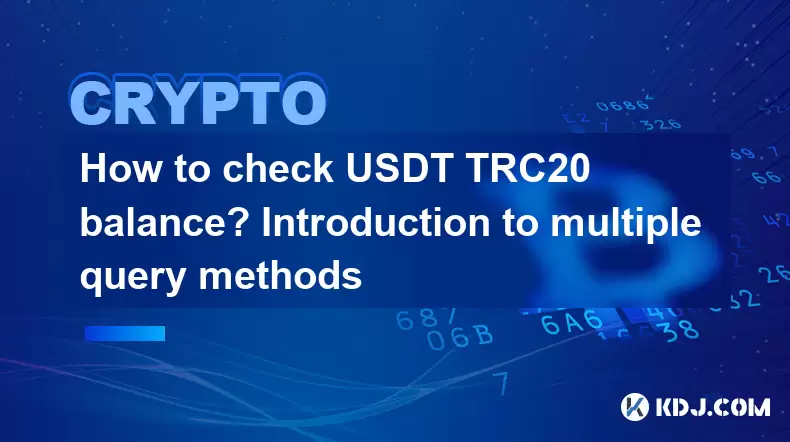
How to check USDT TRC20 balance? Introduction to multiple query methods
Jun 21,2025 at 02:42am
Understanding USDT TRC20 and Its ImportanceUSDT (Tether) is one of the most widely used stablecoins in the cryptocurrency market. It exists on multiple blockchain networks, including TRC20, which operates on the Tron (TRX) network. Checking your USDT TRC20 balance accurately is crucial for users who hold or transact with this asset. Whether you're sendi...
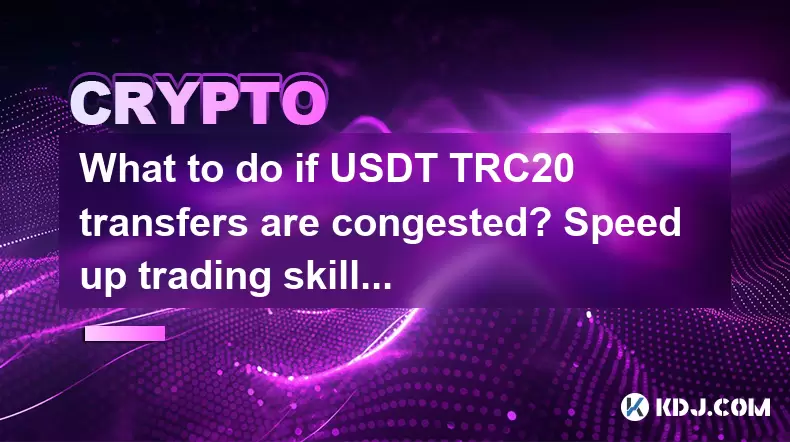
What to do if USDT TRC20 transfers are congested? Speed up trading skills
Jun 13,2025 at 09:56am
Understanding USDT TRC20 Transfer CongestionWhen transferring USDT TRC20, users may occasionally experience delays or congestion. This typically occurs due to network overload on the TRON blockchain, which hosts the TRC20 version of Tether. Unlike the ERC20 variant (which runs on Ethereum), TRC20 transactions are generally faster and cheaper, but during...
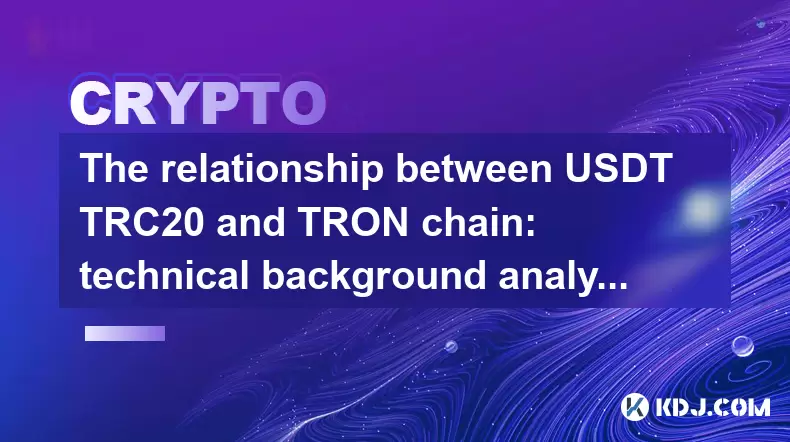
The relationship between USDT TRC20 and TRON chain: technical background analysis
Jun 12,2025 at 01:28pm
What is USDT TRC20?USDT TRC20 refers to the Tether (USDT) token issued on the TRON blockchain using the TRC-20 standard. Unlike the more commonly known ERC-20 version of USDT (which runs on Ethereum), the TRC-20 variant leverages the TRON network's infrastructure for faster and cheaper transactions. The emergence of this version came as part of Tether’s...

How to customize USDT TRC20 mining fees? Flexible adjustment tutorial
Jun 13,2025 at 01:42am
Understanding USDT TRC20 Mining FeesMining fees on the TRON (TRC20) network are essential for processing transactions. Unlike Bitcoin or Ethereum, where miners directly validate transactions, TRON uses a delegated proof-of-stake (DPoS) mechanism. However, users still need to pay bandwidth and energy fees, which are collectively referred to as 'mining fe...

USDT TRC20 transaction is stuck? Solution summary
Jun 14,2025 at 11:15pm
Understanding USDT TRC20 TransactionsWhen users mention that a USDT TRC20 transaction is stuck, they typically refer to a situation where the transfer of Tether (USDT) on the TRON blockchain has not been confirmed for an extended period. This issue may arise due to various reasons such as network congestion, insufficient transaction fees, or wallet-rela...

How to cancel USDT TRC20 unconfirmed transactions? Operation guide
Jun 13,2025 at 11:01pm
Understanding USDT TRC20 Unconfirmed TransactionsWhen dealing with USDT TRC20 transactions, it’s crucial to understand what an unconfirmed transaction means. An unconfirmed transaction is one that has been broadcasted to the blockchain network but hasn’t yet been included in a block. This typically occurs due to low transaction fees or network congestio...

How to check USDT TRC20 balance? Introduction to multiple query methods
Jun 21,2025 at 02:42am
Understanding USDT TRC20 and Its ImportanceUSDT (Tether) is one of the most widely used stablecoins in the cryptocurrency market. It exists on multiple blockchain networks, including TRC20, which operates on the Tron (TRX) network. Checking your USDT TRC20 balance accurately is crucial for users who hold or transact with this asset. Whether you're sendi...

What to do if USDT TRC20 transfers are congested? Speed up trading skills
Jun 13,2025 at 09:56am
Understanding USDT TRC20 Transfer CongestionWhen transferring USDT TRC20, users may occasionally experience delays or congestion. This typically occurs due to network overload on the TRON blockchain, which hosts the TRC20 version of Tether. Unlike the ERC20 variant (which runs on Ethereum), TRC20 transactions are generally faster and cheaper, but during...

The relationship between USDT TRC20 and TRON chain: technical background analysis
Jun 12,2025 at 01:28pm
What is USDT TRC20?USDT TRC20 refers to the Tether (USDT) token issued on the TRON blockchain using the TRC-20 standard. Unlike the more commonly known ERC-20 version of USDT (which runs on Ethereum), the TRC-20 variant leverages the TRON network's infrastructure for faster and cheaper transactions. The emergence of this version came as part of Tether’s...
See all articles

























































































